
Image source: NIO official website
Appearance and Interfaces
NIO ET7 Cockpit Domain Controller Appearance
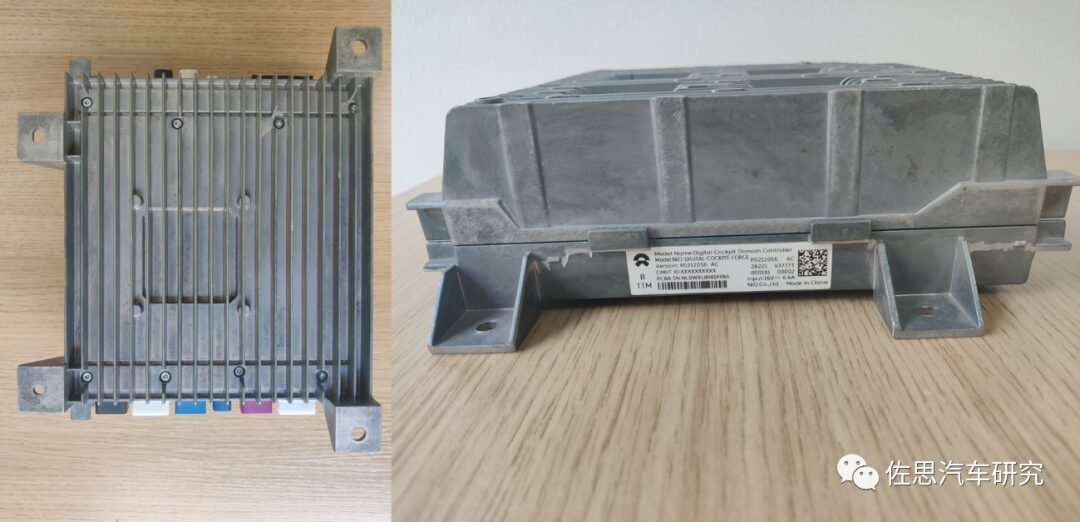
Image source: Zosi Automotive Research “2023 Intelligent Cockpit Domain Controller and Vehicle Control Disassembly Report (Part 1)”
NIO ET7 Cockpit Domain Controller Internal Structure
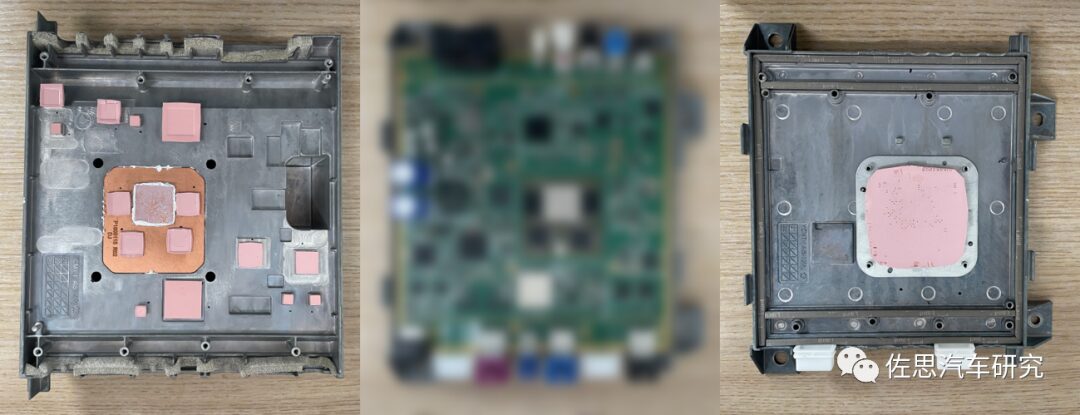
Image source: Zosi Automotive Research “2023 Intelligent Cockpit Domain Controller and Vehicle Control Disassembly Report (Part 1)”
CPU and Storage Chips
NIO ET7 Cockpit Domain Controller SoC Module
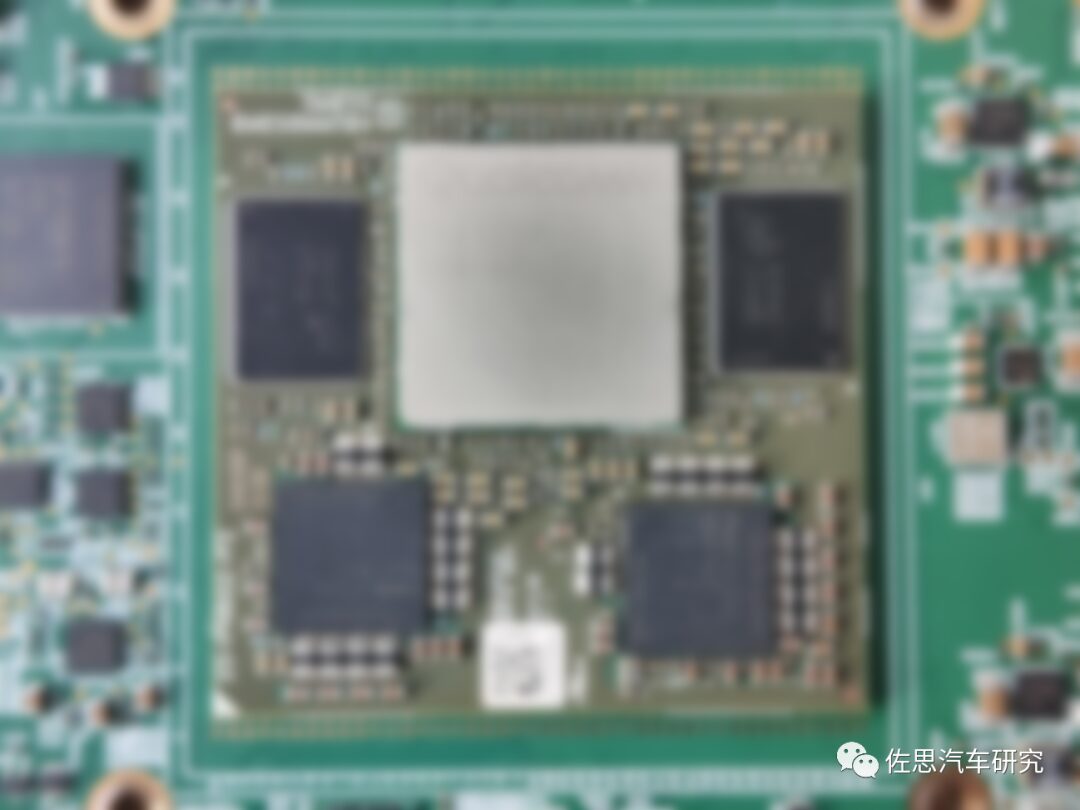
Image source: Zosi Automotive Research “2023 Intelligent Cockpit Domain Controller and Vehicle Control Disassembly Report (Part 1)”
Samsung UFS 2.1 Storage Chip Parameters
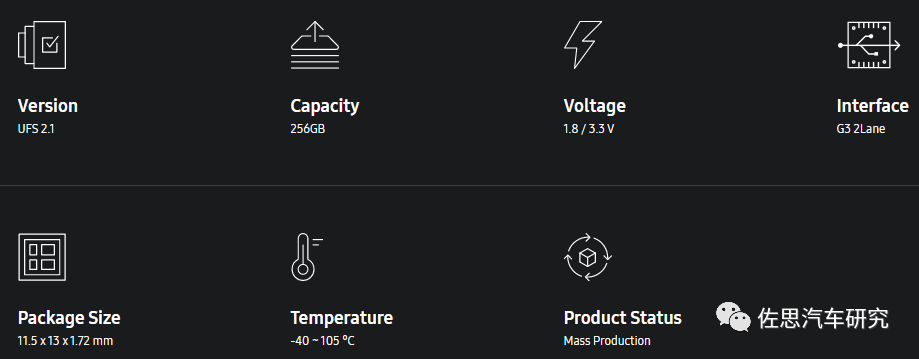
Image source: Samsung official website
Ethernet Switch
Marvell 88E6321 Internal Framework Diagram

Image source: Marvell
Video Input and Output
NIO ET7 Cockpit Domain Controller Video Input Section
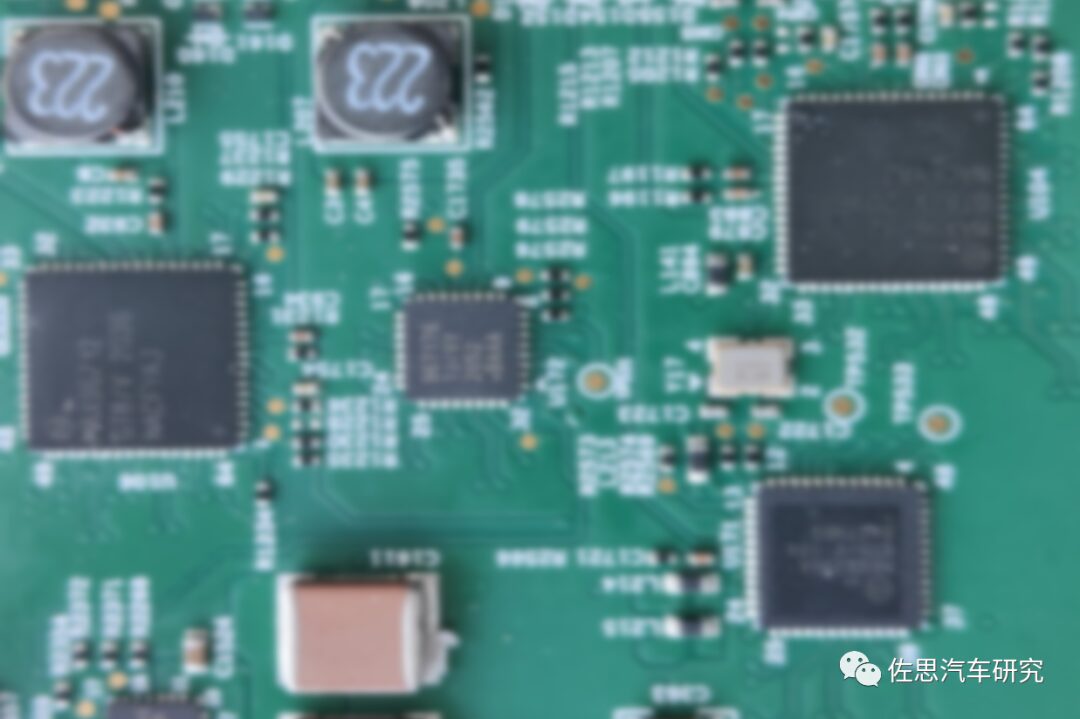
Image source: Zosi Automotive Research “2023 Intelligent Cockpit Domain Controller and Vehicle Control Disassembly Report (Part 1)”
MAX96712 Internal Block Diagram

Image source: ADI
NIO ET7 Cockpit Domain Controller Video Output Section

Image source: Zosi Automotive Research “2023 Intelligent Cockpit Domain Controller and Vehicle Control Disassembly Report (Part 1)”
PCB Board Backside
NIO ET7 Domain Control Main Board Backside
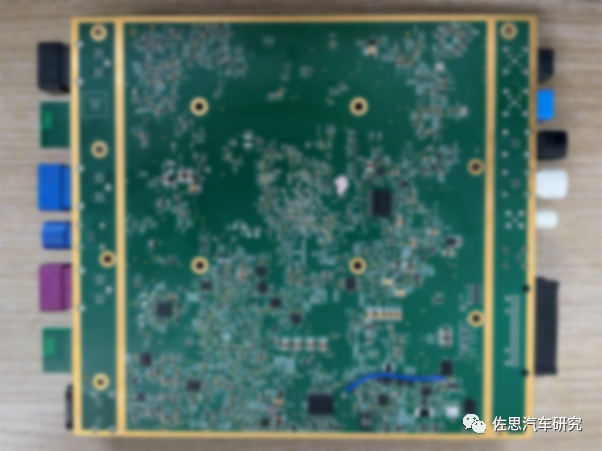
Image source: Zosi Automotive Research “2023 Intelligent Cockpit Domain Controller and Vehicle Control Disassembly Report (Part 1)”
Table of Contents for “2023 Intelligent Cockpit Domain Controller and Vehicle Control Disassembly Report (Part 1)”
01
Toyota Mid-Range Vehicle Control Disassembly
1.1 Vehicle Control Appearance Front
1.2 Screen Module Back
1.3 Screen Module Main Board
1.4 Internal Structure
1.5 Vehicle Control Upper PCB
1.5.1 Bluetooth and WiFi Module
1.5.2 LVDS Receiver and Storage Chip
1.5.3 Video Input and Output
1.6 Vehicle Control Lower PCB
1.6.1 Audio DSP
1.6.2 MCU
1.7 Key Device Parameters: Chip
02
American Fisker Vehicle Control Disassembly
2.1 Fisker Introduction
2.2 Vehicle Control Explosion Diagram
2.3 Appearance Interfaces
2.4 Vehicle Control Upper PCB Board
2.4.1 Main Control Chip and Storage Chip
2.4.2 FPGA Chip and FPD-LINK Chip
2.5 Vehicle Control Lower PCB Board and MCU
2.5.1 Digital Audio Broadcasting Chip and AM/FM Tuning Chip
2.6 Key Device Parameters: FPGA
2.7 Key Device Parameters: Digital Audio Broadcasting DAB Chip
03
Great Wall Coffee Intelligent Vehicle Control
3.1 Appearance Size
3.1.1 Vehicle Control Top View
3.1.2 Vehicle Control Side View
3.2 Vehicle Control Interfaces
3.3 Vehicle Control Upper PCB Board Front
3.4 Vehicle Control Upper PCB Board Back
3.5 Vehicle Control Lower PCB Board Front
3.6 Vehicle Control Lower PCB Board Back
3.7 Key Device Supplier and Cost Estimation – Total Table
3.7.1 Key Device Parameters: Ethernet Switch
3.7.2 Key Device Parameters: Audio Processing Chip
3.7.3 Key Device Parameters: Serializer and Video Conversion
3.7.4 Key Device Parameters: MCU
04
NIO ET7 Cockpit Domain Controller Disassembly
4.1 Domain Controller Appearance Structure
4.2 Domain Controller Internal Structure
4.3 Domain Controller Interfaces
4.4 Domain Controller PCB Board Front
4.4.1 Chip Module
4.4.2 Storage Chip
4.4.3 MCU
4.4.4 Ethernet Switch
4.4.5 Ethernet Physical Layer Chip
4.4.6 Serializer and Deserializer Chips
4.4.7 Video Output
4.4.8 WiFi and Bluetooth Module
4.4.9 Radio Chip
4.4.10 Capacitors
4.5 Domain Controller PCB Board Back
4.6 Key Device Parameters and Cost Estimation
4.6.1 Key Device Parameters: MCU
4.6.2 Key Device Parameters: Ethernet Switch
4.6.3 Key Device Parameters: Deserializer Chip
4.6.4 Key Device Parameters: CMOS Real-Time Clock (RTC) and Calendar
More Zosi Reports
Zosi Research: 18600021096 (same WeChat)
Zosi 2023 Research Report Writing Plan
Intelligent Connected Vehicle Industry Chain Overview (January 2023 Edition)
| Independent Brand OEM Autonomous Driving | Automotive Vision (Domestic) | High-Precision Mapping |
| Joint Venture Brand OEM Autonomous Driving | Automotive Vision (Overseas) | High-Precision Positioning |
| ADAS and Autonomous Driving Tier1 – Domestic | Automotive Vision Algorithms | Automotive Gateway |
| ADAS and Autonomous Driving Tier1 – Overseas | Surround View Market Research (Local) | Data Closed-Loop Research |
| ADAS Domain Controller Key Components | Surround View Market Research (Joint Venture) | Automotive Information Security Hardware |
| Autonomous Driving and Cockpit Domain Controller | Infrared Night Vision | Automotive Information Security Software |
| Multi-Domain Computing and Regional Controllers | Autonomous Driving Simulation (Overseas) | Wireless Communication Modules |
| Passenger Vehicle Chassis Domain Control | Autonomous Driving Simulation (Domestic) | Charging and Swapping Infrastructure |
| Domain Controller Ranking Analysis | Laser Radar – Domestic | Automotive 5G Integration |
| E/E Architecture | Laser Radar – Overseas | 800V High Voltage Platform |
| L4 Autonomous Driving | Millimeter Wave Radar | Fuel Cells |
| L2/L2+ Autonomous Driving | Automotive Ultrasonic Radar | Integrated Batteries |
| Passenger Vehicle Camera Quarterly Report | Radar Disassembly | Integrated Die Casting |
| ADAS Data Annual Report | Laser and Millimeter Wave Radar Ranking | Automotive Operating Systems |
| Joint Venture Brand Vehicle Networking | Dedicated Vehicle Autonomous Driving | Steer-by-Wire Chassis |
| Independent Brand Vehicle Networking | Mining Autonomous Driving | Skateboard Chassis |
| Autonomous Driving Heavy Trucks | Unmanned Shuttle | Electric Control Suspension |
| Commercial Vehicle ADAS | Unmanned Delivery Vehicle | Steering Systems |
| Commercial Vehicle Intelligent Cockpit | Unmanned Retail Vehicle Research | Brake-by-Wire Research |
| Commercial Vehicle Vehicle Networking | Agricultural Machinery Autonomous Driving | Charging and Swapping Infrastructure |
| Commercial Vehicle Intelligent Chassis | Port Autonomous Driving | Automotive Motor Controllers |
| Automotive Intelligent Cockpit | Modular Reports | Hybrid Power Reports |
| Intelligent Cockpit Tier1 | V2X and Vehicle Road Coordination | Automotive PCB Research |
| Cockpit Multi-Screen and Linkage | Roadside Intelligent Perception | IGBT and SiC Research |
| Intelligent Cockpit Design | Roadside Edge Computing | EV Thermal Management System |
| Instrument and Central Control Display | Automotive eCall System | Automotive Power Electronics |
| Intelligent Rearview Mirror | Automotive EDR Research | Electric Drive and Power Domain |
| Dashcam | Intelligent Vehicle Personalization | Automotive Wiring Harness |
| Automotive Digital Key | Automotive Multimodal Interaction | Automotive Audio |
| Automotive UWB Research | In-Vehicle Voice | Automotive Seats |
| HUD Industry Research | TSP Manufacturers and Products | Automotive Lighting |
| Human-Machine Interaction | Autonomous Driving Regulations | Automotive Magnesium Alloy Die Casting |
| In-Vehicle DMS | Autonomous Driving Standards and Certification | Denso’s New Four Transformations |
| OTA Research | Intelligent Connected Testing Base | New Forces in Car Manufacturing – NIO |
| Automotive Cloud Service Research | PBV and Automotive Robotics | New Forces in Car Manufacturing – Xpeng |
| Automotive Functional Safety | Flying Cars | New Forces in Car Manufacturing – Li Auto |
| AUTOSAR Research | Integrated Parking Research | Autonomous Driving Chips |
| Software Defined Vehicles | Smart Parking Research | Cockpit SoC |
| Software Suppliers | Car Sharing and Autonomous Driving | Automotive VCU Research |
| Passenger Vehicle T-Box | Vehicle Digital Transformation | Sensor Chips |
| Commercial Vehicle T-Box | Smart Surfaces | In-Vehicle Storage Chips |
| T-Box Ranking Analysis | Xpeng G9 Function Disassembly | Vehicle CIS Research |
| Li Auto L8/L9 Function Disassembly | NIO ET5/ET7 Intelligent Function Disassembly | Autonomous Driving Fusion Algorithms |
| Dji Front Dual Vision and Tudatong Laser Radar Disassembly |